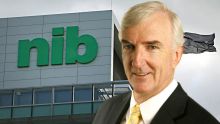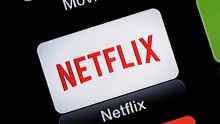Earlier this month, Apple poached the chief of Amazon's Fire TV unit to run its television operations. Tim Twerdhal brings hardware and content experience to his new gig, and his hiring suggests a renewed focus on the Apple TV set-top box.
Twerdhal's arrival comes as the company tests a new, fifth-generation Apple TV that it may release as soon as this year. Internally codenamed "J105," the new box will be capable of streaming ultra-high-definition 4K and more vivid colours, according to people familiar with the plans.
More BusinessDay Videos
Apple shares surpass record high
A rally in US financial and industrial stocks pushes the S&P; 500's market capitalisation above $20 trillion.
The features will probably boost Apple TV sales as consumers increasingly upgrade to 4K television sets, but those enhancements alone probably aren't enough to turn the gadget into a groundbreaking, iPhone-calibre product. Time and again, the people say, Apple engineers have been forced to compromise on Apple's vision of revolutionising the living room.
Early on, the Apple TV was going to replace clunky set-top boxes from pay TV-providers and stream live television. It never happened. The team debated bundling a gaming controller with the current model to better compete with Microsoft's Xbox and Sony's PlayStation. That didn't happen either. Originally, viewers were going to be able to shout commands from the couch to the Apple TV. Instead they must talk to the remote control.

Apple has essentially settled for turning the television set into a giant iPhone: a cluster of apps with a store. "That's not what I signed up for," says one of the people, who requested anonymity to talk freely about internal company matters. "I signed up for revolutionary. We got evolutionary."
Gene Munster, who covered Apple for more than a decade as a Piper Jaffray analyst and now runs Loup Ventures, echoes the criticism. "Apple TV begs the question: Why does Apple do hobbies?" he says. "Either do it right or don't do it at all."
Apple doesn't disclose how many Apple TVs it sells, but Chief Financial Officer Luca Maestri acknowledged in a recent interview that sales decreased year-over-year from the 2015 holiday season to this past 2016 holiday period.
The research firm eMarketer says the fourth-generation Apple TV has steadily lost market share since its release in 2015; in January just 11.9 per cent of US connected television customers were using it, the research firm says, down from 12.5 per cent in September. In part, the slide reflects competition from boxes that do the same and more for less money.

While the Apple TV itself isn't critical to Apple's bottom line, it's central to the company's services business because increasingly the living room is where consumers buy, rent and consume media. Services represented almost $US25 billion ($32.5 million) in revenue for Apple in the last fiscal year, making it the company's second biggest category after the iPhone.
Apple declined to comment or make Twerdhal available for an interview.
The Apple TV's history is a study in gradualism. Previewed by Steve Jobs in 2006, the first box was designed simply to stream iTunes video from a Mac to a TV set. The next version, launched in 2010, let users stream content from the internet. The latest box was announced in September 2015, a few months later than originally scheduled. Widely considered an improvement by consumers and product reviewers, the Apple TV features the App Store, voice control and a glass remote that enables motion-controlled gaming, which for example lets players use the remote like a steering wheel for a car-racing title.
But the latest Apple TV sells from $US149 ($239 in Australia), more than twice as much as its predecessor. What's more, little about the viewing experience has changed. Apple TV users still have to buy an individual episode via the iTunes Store, and download and log in to streaming service apps that they might pay extra for.
The current model was originally supposed to replace pay TV boxes altogether. Early prototypes had connectors for a coaxial port, which sends the live cable TV signal to televisions. Under this plan, Apple was to control the interface, collect fees from viewers and then share most of the revenue with the pay TV and media companies.
A new TV app was to be the main interface for accessing live shows and sports. But when the app was finally launched in December, it merely let viewers access their iTunes video library and the iTunes Store, functions that already existed on the Apple TV.
Apple had a backup plan if it wasn't able to replace the existing boxes — the much-ballyhooed "skinny bundle," a stripped down web service that would let viewers choose channels rather than paying for ones they don't watch.
But the two sides stumbled over cost, the composition of bundles and negotiating tactics. The media companies blamed Apple's arrogance; Apple blamed the media companies' inflexibility. After the negotiations foundered, Apple's hardware team ditched the coaxial port.
The Apple TV's software is also less ambitious than originally envisioned. The current model features an iPhone-like app grid, but designers had prototyped more novel interfaces. One idea, dubbed "Intentions" internally, put the four tabs in the centre of the screen: three for the Apple TV's main content types (video, music, and gaming) and one for everything else. Another idea: letting viewers pull up previews of content by hovering on each icon (a feature currently reserved for only a few of Apple's bundled apps).
To a certain extent, the Apple TV is handcuffed by its parent's addiction to fat margins. Apple is constitutionally allergic to losing money on a product — even if it can make up the difference by selling content. Some engineers initially believed the current set-top box should be capable of streaming 4K video, which offers about twice the resolution as the previous generation of high-definition TV. But 4K requires a faster processor, which would have pushed up manufacturing costs. That would have forced Apple to accept a lower margin or charge more than the market would bear. Apple settled for a lesser chip that debuted back in 2014 — and no 4K. Likewise, not bundling a gaming controller was partially a cost-driven decision.
The arrival of Twerdhal, the former Amazon Fire TV chief, will free up his predecessor, Pete Distad, to try and hammer out content deals and potentially revive the skinny bundle. Distad joined Apple in 2013 after serving as a senior vice president of content distribution at video streaming service Hulu.
For his part, Twerdhal worked at Netflix and Roku, before joining Amazon. "The Amazon hire shows Apple is mixing things up, looking to make improvements,'" Munster says. "I think they realise it is drifting sideways at this point."
Unless the company fixes the Apple TV, he says, it risks "losing the living room."
Bloomberg















0 comments
New User? Sign up